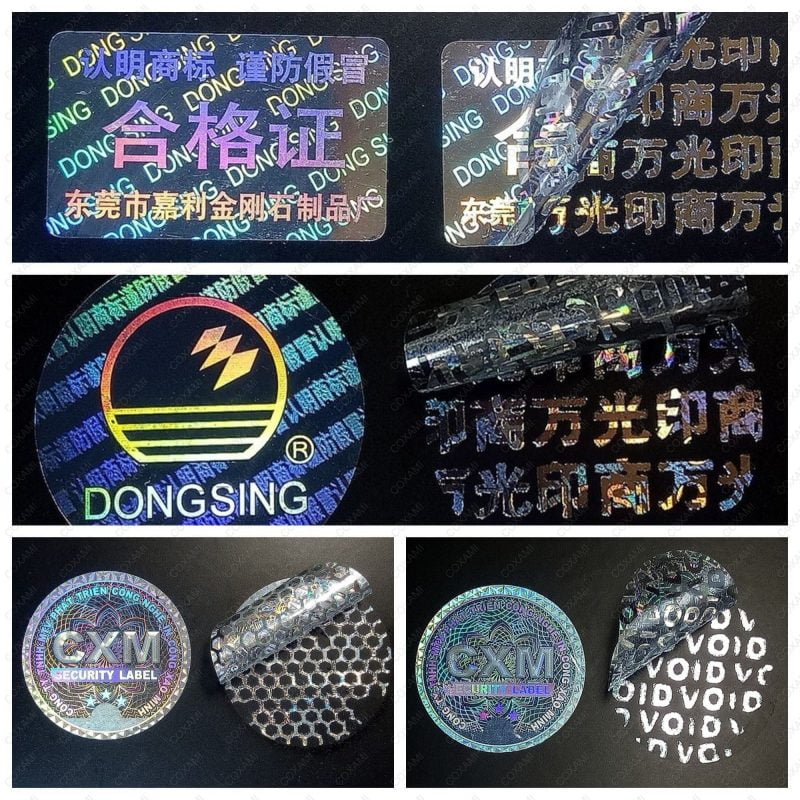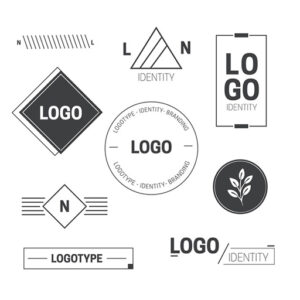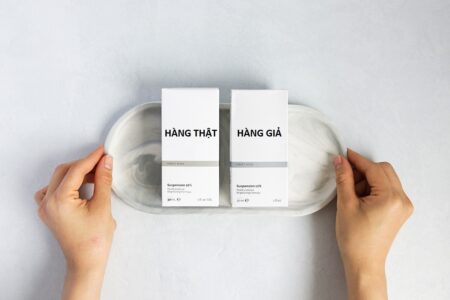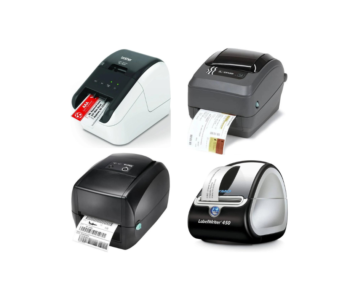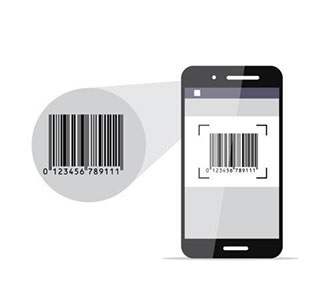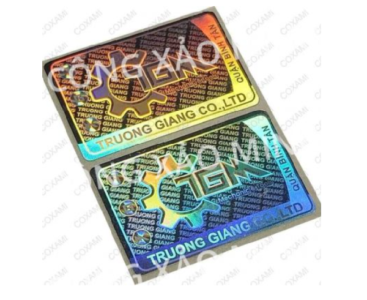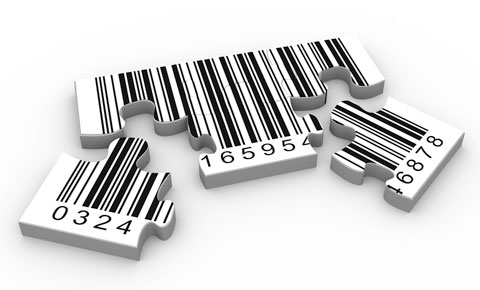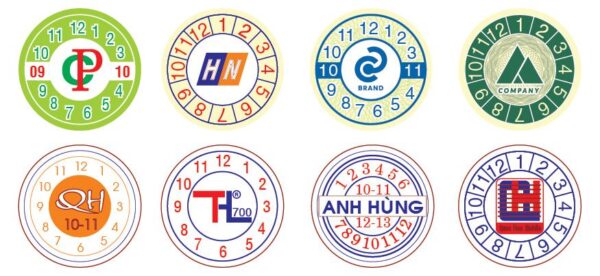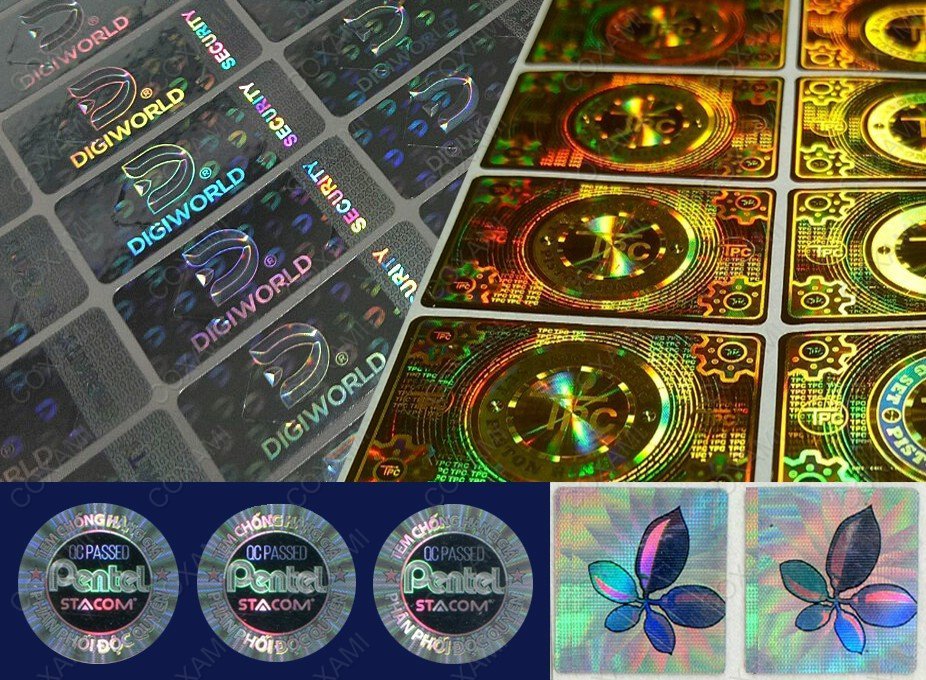
In a few years, hologram stamps will begin to play an increasingly important role, not only as a distinguishing feature on packaging, but also for branding purposes.
And with that development came the idea that
hologram stamps can help identify genuine products
from increasingly brazen attacks by impersonists.
The logic is simple – consumers will be assured when they see a three-dimensional shape,
may be missing or have a clear poor quality on fake copies.
That argument no longer holds,
The growing trend among brand owners,
and even some governments,
is to stay away from hologram stamps as a security product.
India’s largest state, Uttar Pradesh, has dropped hosing from their alcohol consumption stamps, a move currently being considered by other Indian countries.
Similarly, some major pharmaceutical and CPG companies have dropped hologram stamps
from their products or are currently preparing to switch to other competitive solutions.
Here,
I raised questions about what happened to the technology that was once used for this.
On one level,
the answer is simple –
hodil itself becomes very susceptible to counterfeiting and therefore confidence in their effectiveness is quickly reduced.
However, there are other causes that are more nuanced and related to brand marketing,
consumer behavior and technology trends.
This article will outline five key reasons that led to the demise of hologram stamps and did not work well for the application of this technology in the future as a product security solution.
1) Easy to mandimates
The rapid pace of technological development has transformed three-dimensional production from what used to be a sophisticated manufacturing province into a popular and almost routine industry.
That doesn’t mean that creating hosal shapes is simple by any means, only that the cost and craft behind art now no longer exist.
Although there are still some big and prominent suppliers,
a real sed that has also arisen,
especially in China and India,
for the widespread supply of seals
and low-cost hosing around the globe.
The appearance of a large supply facility
and eagerly converted the three-dimensional shape from a segment to a cargo product
and facilitates extensive replication of genuine security hoolyes.
Any original hologram stamp can now be copied easily and well at high volume.
As a result, many brand owners
spent significantly to create secure hologram stamp products
but saw their efforts and investments wasted when a fake variant appeared on the market.
There is now widespread trust among brand owners
and security experts that hosing no longer offers protection benefits that were once hailed as supreme.
2)Hologram Stamps & Media Costs
Although fake three-dimensional shapes are often of uneven quality compared to the original,
but it is also true that they are often enough to fool an ordinary consumer who can not notice the difference.
To make reasonable use of the three-dimensional investment, therefore,
brand owners must devote significant marketing efforts and costs to media the base to consumers.
Although there are some notable examples of this effort through online communication
but make sure most product managers don’t publicly expose their counterfeiting
and take a larger warning step on how to distinguish their products from counterfeits.
Therefore, communication costs relate not only to the monetary aspect of marketing investment, but also the costs associated with diluting their brand assets from such public exposure.
3)Hologram Stamps & Psychological Problems
Consider the following conundrums.
A money sheet is bustling with security features
and consumers often pay little attention or do not pay attention to them.
In fact, the collection of passive security features – watermarks,
optically modified ink, hosal shape, etc. –
largely a wasteful attempt on consumer involvement for the purpose of identifying counterfeit goods.
The reason according to neuroscea is simple –
Human attention is fleeting and we simply can’t bother taking the time to consider something even as important as banknotes in our wallets.
This significant obstacle represents the biggest challenge faced by brand owners when considering the use of hoolyes and other passive technologies.
To properly verify a product, consumers must actively interrogate the product, which most simply do not want to do.
And even if that act can be instilled,
is extremely complicated by the two problems described above – fake hobo can be very similar to the real image
and there is a marketing indifference to educating people to distinguish between them.
This is a major element of behavioural science,
conscious participation with a product that serves as the most effective means of directing attention,
a simple action that is not inspired by the passive homing.
4)Hologram Stamps & Changing Times
Hologram stamps are a passive body that requires visual inspection and determination of authenticity.
This is basically not an authentication process but a best prediction that the product is original.
Further
passive technologies that do not allow any kind of consumer involvement,
something of increasing importance to the heads of
marketing requires adding value to their investment.
As a result, brand owners are turning to technologies that provide
actual binary results – yes or no in terms of authenticity –
and turn their backs on the fixed services in the passive category.
This trend begins with mass mass-seriesing
in which a single number is inserted into the QR code and placed on a package,
and can then be verified using the Smartphone app.
However, these old solutions are currently being overtaken by the current generation of technology,
such as fingerprinting,
brings much greater benefits than all its earlier earlier earlier.
hologram stamps are static, non-interactive products,
has limited utility in the 21st century digital world,
where brand owners crave value-added benefits that come from participation.
5) Hologram Stamps & Fake Invitations
hologram stamps are one of the most ineffective security solutions available and, in fact,
they can even act as an invitation to fake because of an interesting dilemma.
To make matters worse, hosal shapes inevitably matter
even if layered with another technology such as a serialized QR code or AN NFC chip.
While consumer indifference makes it difficult to direct the attention necessary to scrutinize a hooly figure, a false sense of security paradoxically appears due to the brand familiarity we link to when we see them.
As a result, the mere presence of hologram stamps can create false reassiation.
And because consumers are incapable of accurately identifying the original three-dimensional shape,
counterfeiters can take advantage of that weakness in combination with the
established to successfully maintain their products in the market.
Put simply,
it is better not to place hoolyes or any other layering technology combined with hosal shapes on a package to eliminate problems with false links and false guarantees.
There is no doubt that the three-dimensional figure still maintains a strong presence
on many products and this will likely continue for some time due to the established brand cache. It is also true that the passive nature of hosal shapes combined with the ease of copying has significantly reduced their effectiveness as a brand protection solution.
Hologram stamps now represent a low hanging fruit for businesses
Criminals can easily target such embedded products to create the perfect simulation of a genuine brand.
Clear and attractive security deficiencies of three-dimensional images and other passive technologies
has led to the development of an entirely new set of services
almost unified by their powerful ability to resist overlap.
The recent introduction of third-generation (3G) solutions has opened a new era in the fight against counterfeit products.
3G solution is a solution that can not be copied successfully as well as simulated.
Some technologies have been able to set requirements for these strict requirements.
hologram stamps have served their purpose at the same time as a security tool,
But not anymore.
However, they can be very beautiful and provide this kind of visual appeal
for a package that creates undeniable marketing sparkle.
Any attempt to extend their use beyond product security will result in will result in willary abuse,
give what we know now about the uselessness of hologram stamps,
and therefore a responsibility of the company for the safety of consumers.


